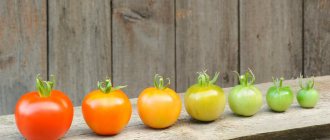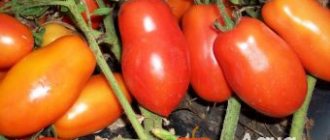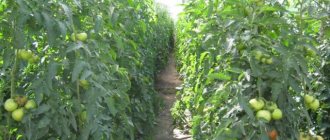Not all housewives have time to pickle tomatoes. Some of them spoil to such an extent that it is no longer possible to salt them, but you can still eat them. Also, sometimes you have to do something with green tomatoes, which are also a shame to throw away. Fortunately, there are several options for rational use of these vegetables.
How to recycle spoiled tomatoes?
Let's say there are a lot of tomatoes stored in the kitchen with minor signs of spoilage in the form of darkening on the skin, softness in some places, etc.
You shouldn’t throw away vegetables, because the beneficial substances in them are preserved even in this state. They only slightly lose their taste. Not everyone likes to add spoiled tomatoes to salads, but they are no longer suitable for pickling.
There are several options for processing such vegetables into tasty additives for dishes:
- Tomato oil . Fleshy fruits are suitable for this. They are washed, allowed to dry and then baked for about 10 minutes. Remove the skin from the softened fruits, add oil and fresh chopped herbs. Then, using a blender, beat the tomatoes until liquid. The resulting butter is ideal for simple sandwiches that can be topped with cheese. It also goes well with meat and fish. By freezing tomato oil, you can extend its shelf life up to six months. If you just store it in a cool place, then it is advisable to use it within a week;
- Salad dressing . The fruits are cut and rubbed through a sieve. To improve the taste, add wine vinegar, salt and honey. Those who like it spicier can also grate the garlic. Whisk everything together and pour the resulting mass with olive oil, as it is better suited for salads than vegetable oil. The shelf life of tomato dressing is six months. After defrosting, it must be beaten before adding to the salad;
- Lecho . According to the classic recipe, in addition to tomatoes, it should contain onions and sweet peppers. Spoiled tomatoes are passed through a meat grinder and allowed to simmer over low heat. To them add peppers cut into half rings, onions and some greens. 40 minutes after boiling, the hot mass is removed from the stove, salted and seasoned with bay leaf. It is poured into jars and screwed. It is advisable to turn the jars over and cover them with a blanket for the day.
In this video, culinary specialist Anna Denisenko will show how you can process and prepare soft, spoiled tomatoes:
Sauce
You can quickly make a delicious pasta sauce from overripe tomatoes.
How to do it:
- The tomatoes are grated and the skins are discarded.
- Garlic, passed through a press, fresh herbs, salt and pepper to taste are added to the tomato mixture.
- Mix everything thoroughly and let it sit for a while while the pasta cooks.
- Then the prepared sauce is seasoned with spaghetti, and a delicious lunch is ready.
- Leftover sauce can be stored in a container in the refrigerator.
Another recipe that calls for overripe tomatoes is sandwich paste. It tastes like lecho, but you don’t need to cook the tomatoes.
How to prepare it:
I always have fresh lemons on hand: the sea salt in a jar trick
Now in South America: the first Brazilians were vaccinated with the Sputnik V vaccine
Fashion selection for men and women: trending shirt styles for this winter
- Cut the tomatoes in half, remove the stems and sprinkle with salt.
- Then place on a baking sheet and bake at 190°C for 20-30 minutes. Place the finished tomatoes in a bowl and mash with a fork, sprinkle with olive oil, add chopped herbs (basil, dill, parsley, oregano) and garlic.
- Mix the paste and add salt to taste.
It is very tasty to spread it on freshly baked bread or pita bread.
The benefits of processed tomatoes
It is believed that vegetables lose their beneficial qualities after heat treatment and salting. This does not apply to all vegetable crops. Tomatoes are unique in that they can be boiled, fried, salted and without fear that the concentration of nutrients in them will decrease.
Moreover, nutritionists recommend cooking them in a double boiler for those people who have certain stomach problems and are not recommended to eat vegetables raw.
Tomato paste is rich in lycopene. This element plays the role of an antioxidant, reducing the risk of mutated cells, that is, it prevents the formation of oncology. At the same time, tomatoes processed into paste are better absorbed.
Many people do not like to eat this vegetable separately from other dishes. Therefore, as a complement to meat or fish, you can eat a sufficient amount of healthy pasta. It contains a lot of moisture, so it reduces the likelihood of constipation.
Tomatoes in their own juice (with basil)
Tomatoes and basil are a classic! This recipe can be used with both cherry tomatoes in their own juice and larger tomatoes. It's simple: cook the juice from the tomatoes (peel, puree and boil), pour the boiled juice over whole tomatoes in jars, and roll them up. We won't use vinegar.
Ingredients:
- 1 kg of tomatoes for juice;
- 800 g cherry tomatoes or other whole tomatoes;
- bunch of basil;
- 1 tbsp. l. salt;
- 2 tbsp. l. Sahara.
Wash the tomatoes and basil. Pass a kilogram of tomatoes through a juicer or blanch (hold in boiling water for 20 seconds), peel and run through a blender. Pour tomato juice with pulp into the pan, add salt and sugar. After boiling, cook for 10 minutes over medium heat, stirring and skimming off the foam. Then add chopped basil and cook for another 5 minutes.
Place whole tomatoes in sterilized jars, fill with juice and secure with sterile lids. Cool under a blanket and take it to a closet, dark room or closet.
How to process green tomatoes for the winter?
Green fruits are not as healthy as red ones. The fact is that the red color is provided by the pigment lycopene. Accordingly, it is practically absent in unripe green vegetables. However, they also contain other useful substances, albeit in slightly reduced quantities.
Therefore, you should not throw away green tomatoes either. From them you can do the following:
- Green tomatoes in tomato . Cut them into slices, and cut the onions, carrots and bell peppers into strips. Chop the garlic as thoroughly as possible. Leave all the ingredients except pepper and garlic in the pan for half an hour without turning on the stove. Vegetables should give juice. Only then simmer them over low heat for 15 minutes, adding sunflower oil and paste. Then you can throw pepper and garlic into the boiling mass. After another 10 minutes, add a tablespoon of vinegar (per 1 kg of tomatoes) and pour the stewed vegetables into jars. Covering them with lids, wrap them up and let them stand for a day;
- Lecho . The recipe will be similar to that discussed above with spoiled tomatoes. The only difference will be that lecho with green tomatoes will not be as rich in taste. Therefore, after passing them through a meat grinder while simmering on fire, it is advisable to add finely chopped carrots. In this case, the cooking time increases by 10 minutes. Otherwise, undercooked carrots will cause rapid spoilage of lecho poured into jars.
— Bruschetta —
The classic Italian appetizer bruschetta is a fairly unpretentious dish. It is easy to prepare, and you can use any ingredients as a filling. Spoiled tomatoes are also suitable. It is enough to cut off the defective parts and bake the tomatoes in the oven for a few minutes. The same should be done with slices of bread, supplemented, for example, with cheese. When they are browned, you can place the tomatoes on top of the bruschetta.
Freezing: pros and cons
Another way to “save” remaining spoiled tomatoes is freezing.
Unlike processing into paste or lecho, this method has a number of disadvantages :
- Frozen vegetables will take up space in the freezer. Banks can be stored under the bed or any other place where they will not get in the way;
- Some nutrients are lost;
- After defrosting, the tomatoes will be soft, so they are unlikely to be suitable for salad.
Freezing tomatoes also has its advantages :
- The taste of the fruit will remain the same;
- You can cut them in advance and, after defrosting, use them as an ingredient for making pizza or borscht;
- The skin will be easy to remove from thawed tomatoes.
Gazpacho - cold tomato soup
Gazpacho on a hot day is simply a salvation! And soup, and vitamins, and cook in 10 minutes. For this Spanish soup, the vegetables need to be refrigerated. Or after cooking, cool the soup itself. You don’t need to cook anything; you can buy crackers at the store. So, grind some of the vegetables in a blender, chop some finely and add to the liquid mass. Go!
Ingredients for classic gazpacho:
- 8 tomatoes;
- 2 bell peppers;
- 2 cloves of garlic;
- 2 cucumbers;
- bulb;
- ready-made crackers or a couple of slices of white stale bread;
- a couple of tablespoons of olive oil;
- salt to taste;
- 2 tbsp. tablespoons lemon juice (can be replaced with a spoonful of 6 percent table vinegar).
Rinse the vegetables. Leave the cucumbers for serving. They will need to be cut into small cubes. Cut half of the bread (if not used as croutons) into cubes and fry in a hot, dry frying pan, having previously trimmed the crusts. Place all other vegetables (peel the onion and garlic), the remaining bread, salt and lemon juice in a blender bowl and blend. Taste, add salt, lemon juice, black pepper if necessary. Pour the soup into bowls, add croutons, and add a drizzle of olive oil. Garnish with a sprig of basil.
How to quickly process tomatoes for the winter?
The fastest way to process tomatoes is to make tomato sauce from them. It will perfectly highlight the taste of a meat dish and add a slight sweetness to it.
Tomato sauce also lasts a long time in the freezer.
Peel the tomato and grate the vegetable on a fine grater. The mushy mass is flavored with finely chopped garlic and salt. Then the tomato sauce is simmered over low heat for no more than 15 minutes. It must be stirred periodically to avoid a bitter aftertaste.
As a result, in just half an hour the hostess will have an excellent and versatile sauce. It can be used for pizza, on salads or simply spread on toast. The sauce is poured into a convenient container and frozen for the winter.
Properly processed tomatoes will provide the housewife with several useful additions to dishes, including sauce, lecho, tomato oil, etc. In this case, you can use overripe, slightly spoiled and even green fruits that would be a pity to throw away.
Salad dressing
You can make a vinaigrette from overripe tomatoes. In this case, we are not talking about a type of vegetable salad. Vinaigrette is a vinegar-based salad dressing that is ideal for fresh dishes.
Bust of Nefertiti, which was created by an artist and bees, sells for 38,000 euros
Scientists say whether Russian regions will have enough coronavirus vaccine
Unusual preparation of an ordinary egg: the trick is in the length
To prepare you need:
- Choose ripe and juicy tomatoes. They are cut in half and ground through a sieve.
- Then add a little wine or apple cider vinegar, honey, mustard, salt and chopped garlic.
- Whisk everything thoroughly and slowly pour in the oil. In order for the dressing to acquire a pronounced aroma and light texture, you should give preference to olive oil.
- The finished product is poured into a glass container and stored in the refrigerator.
Before use, you need to let it stand for 10-15 minutes at room temperature, shake well and then season salads.
Freeze and recycle later
Well, if you haven’t figured out what to do with overripe tomatoes, if you don’t have time to cook, just freeze them to use later. Wash the tomatoes, remove rotten spots if necessary and dry well. Place the tomatoes in plastic bags and place in the freezer. As soon as you are ready to cook something, take the tomatoes out of the freezer, let them thaw, remove the skin (it will come off very easily) and make, for example, tomato soup, sauce or juice.
source










